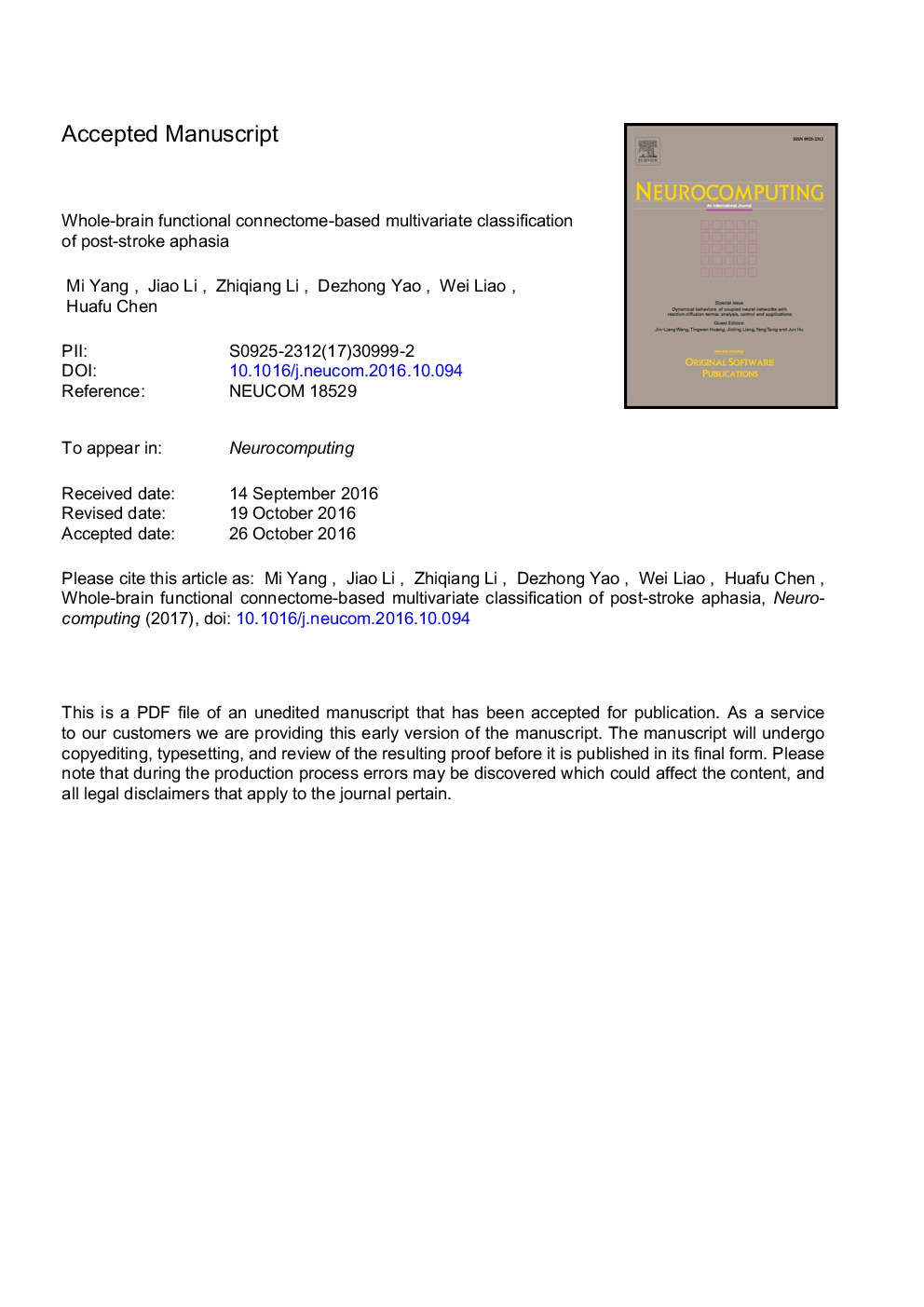| Article ID | Journal | Published Year | Pages | File Type |
|---|---|---|---|---|
| 4946881 | Neurocomputing | 2017 | 26 Pages |
Abstract
Patients with post-stroke aphasia (PSA) show abnormalities of intrinsic functional connectivity. However, whether the whole-brain functional connectome can be used as a feature to distinguish patients with PSA from healthy controls is poorly understood. We aim to distinguish PSA patients from controls using whole-brain functional connectivity-based multivariate pattern analysis. These features would be helpful in the understanding of the pathophysiology of PSA. In the present study, resting-state functional magnetic resonance images (fMRI) were acquired in 17 patients with PSA and 20 age- and sex-matched healthy controls. We used functional connectivity pattern and linear support vector machine to classify two groups. The results showed that the accuracy of classification reached to 86.5%, sensitivity reached to 76.5%, and specificity reached to 95.0%. In addition, consensus connections were mainly located in the fronto-parietal, auditory, sensory-motor, and visual networks. Furthermore, the right rolandic operculum contributed the highest weight. We suggest that whole-brain functional connectivity could be used as a potential neuromarker to distinguish PSA patients from controls.
Related Topics
Physical Sciences and Engineering
Computer Science
Artificial Intelligence
Authors
Mi Yang, Jiao Li, Zhiqiang Li, Dezhong Yao, Wei Liao, Huafu Chen,
